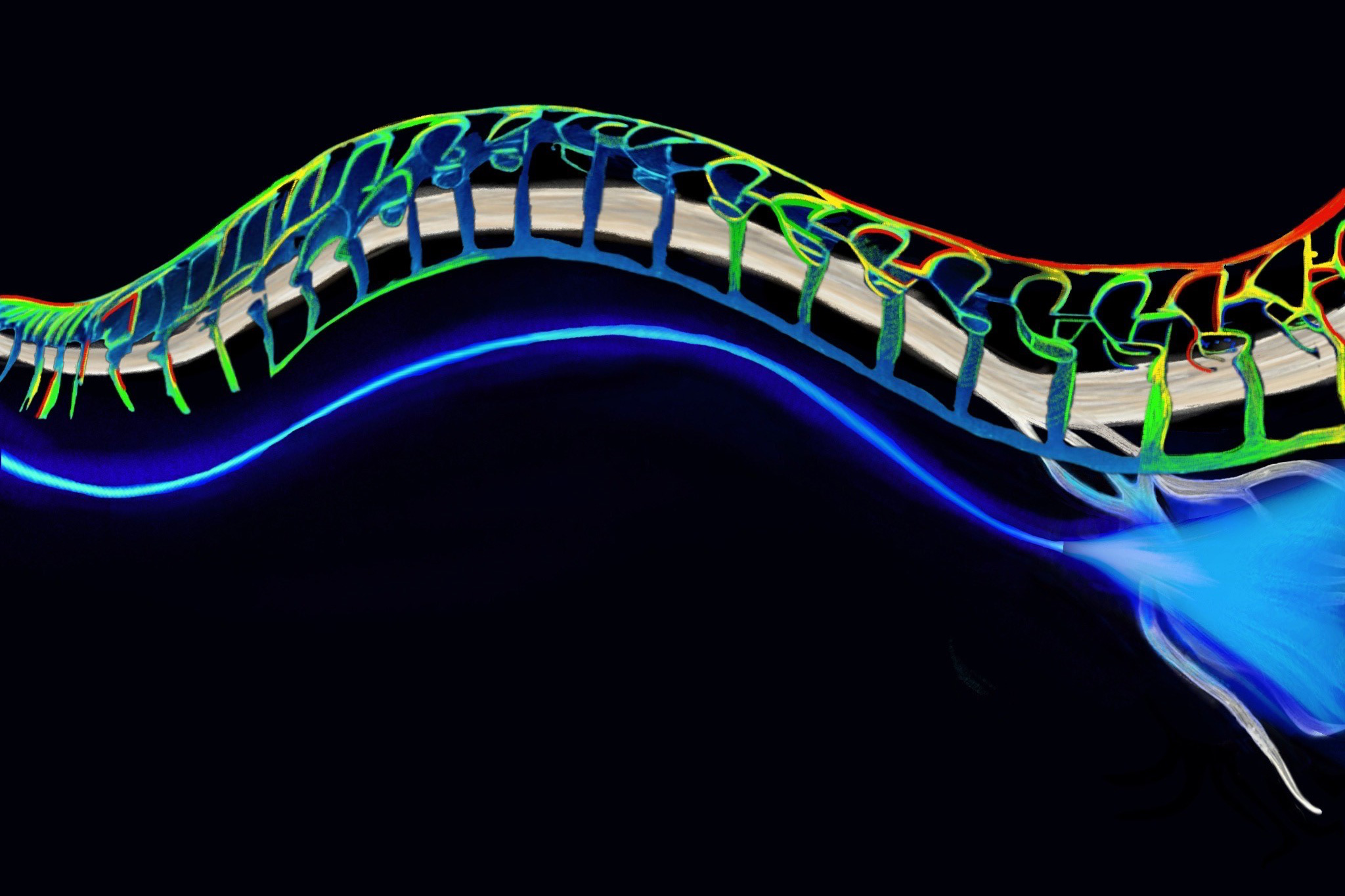A soft hydrogel fiber enables optogenetic pain inhibition during locomotion. [Image: Sabrina Urbina Villafranca]
Peripheral nerve disorders, of which there are more than 100 different types, affect parts of the nervous system outside the brain and spinal cord. Damage to peripheral nerves can lead to weakness, numbness and pain in extremities like the hands and feet, as well as problems with digestion and urination.
Now, researchers in the United States have reportedly developed a new tool that leverages flexible optical fibers to study peripheral nerve disorders in animal models (Nat. Methods, doi: 10.1038/s41592-023-02020-9). The fibers, made from hydrogel, can be implanted and used to optogenetically activate peripheral nerves without impeding the animal’s natural movement.
Beyond the brain
Study author Xinyue Liu, Michigan State University, and her colleagues aimed to expand the use of optogenetics—a powerful tool that allows precise control of selected cell populations using light—beyond the brain. For example, neurons in a mouse will be genetically engineered to respond to light, and illumination then either activates or inhibits the cells.
“[Optogenetics] has been widely used in neuroscience to investigate how different cells in the brain and nervous system function,” said Liu. “However, one of the challenges in applying optogenetics is the delivery of light to peripheral nerves that experience mechanical strain during locomotion.”
Traditional light-delivery devices composed of rigid materials, such as silica fibers, can damage soft tissues and impede natural animal behaviors. In turn, the natural locomotion of animals leads to repeated mechanical strain on implanted fibers, resulting in reduced light-transmission efficiency and reliability.
Fatigue-resistant fibers
The researchers took a novel approach using hydrogels, which have optical transparency in the visible range and tunable mechanical properties. Hydrogel materials are soft and have a high water content, but they remain susceptible to fatigue fracture from recurring deformations.
In a mouse model of chronic inflammatory pain, the researchers found they could successfully inhibit sciatic pain with a 473-nm pulsed laser running through the hydrogel fibers.
To create fatigue-resistant hydrogel optical fibers, Liu and her colleagues first had to optimize the hydrogel’s optical and mechanical properties. They introduced polymeric nanocrystalline domains within the hydrogel fibers to prevent crack propagation and ensure fiber resilience against repeated stretching. In the end, the fibers had low optical losses of 1.07 dB cm−1, Young’s modulus of 1.6 MPa, stretchability of 200% and fatigue strength of 1.4 MPa against 30,000 stretch cycles.
As proof-of-concept validation, the hydrogel fibers were implanted onto the sciatic nerves of mice, which could still freely run on a wheel. In a mouse model of chronic inflammatory pain, the researchers found they could successfully inhibit sciatic pain with a 473-nm pulsed laser running through the hydrogel fibers.
“We are exploring methods for scaling up the synthesis and fabrication of hydrogel optical fibers, which might fit the scope of large animals and even primates,” said Liu. “Our findings indicate the possibility of applying the light-delivery technique with hydrogel fibers to other mobile organs beyond peripheral nerves, such as the heart and gastrointestinal system, through customized fiber designs.”


